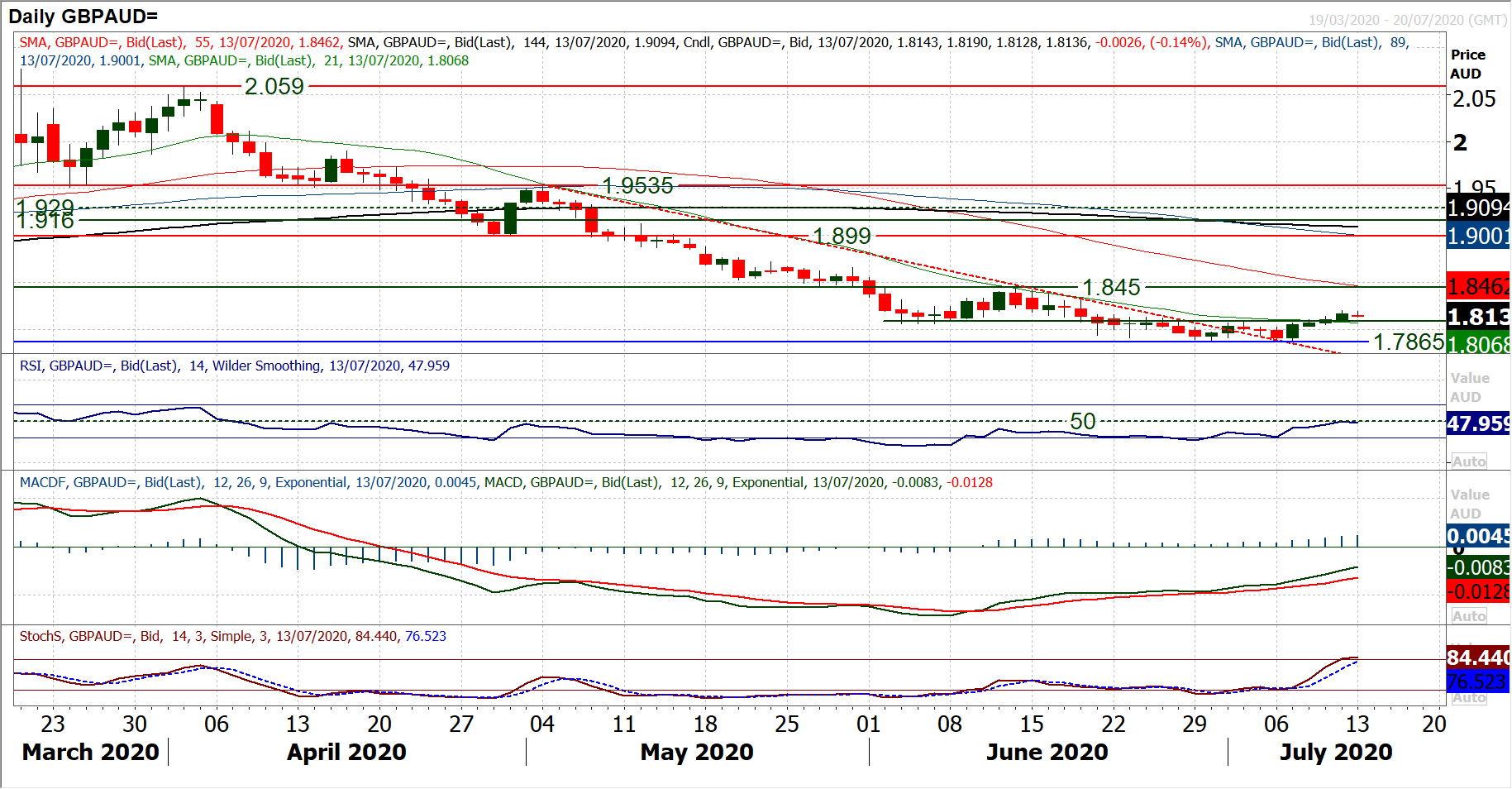Pound-to-Australian Dollar Slips into the "Buy Zone"
- GBP/AUD's decline fades
- Chart analysis shows emergent signals of recovery
- But key levels must be respected

Image © Adobe Images
The Pound-Australian Dollar exchange rate has been turning increasingly positive during the course of July, prompting a leading financial market analyst to question whether the pair has finally shaken its post-April downtrend and is about to go higher.
"We tend to be a little cautious of calling Sterling long against anything right now, but the improvement on Sterling/Aussie may have as much to do with a sliding Aussie as it does a Sterling rebound," says Richard Perry, an analyst at Hantec Markets. "The past few sessions have posted a succession of positive closes and four bull candles in a row has now been seen for the first time since the strong bull run of Q1."
The Pound has been in decline against the Australian Dollar since April 06, when a broad-based recovery in financial markets took hold after investors started betting the worst of the coronacrisis market meltdown had passed.
Secure a retail exchange rate that is between 3-5% stronger than offered by leading banks, learn more.
The Aussie Dollar has since ridden the tailcoats of that recovery and outperformed the majority of its peers. However, this outperformance has since faded, allowing the likes of Sterling to recover some lost ground, particularly at a time when the market is reassessing the Pound in light of potentially supportive developments on the Brexit trade negotiation front.
Perry asks whether a decisive recovery from the 1.7865 low is now taking hold, but qualifies that a number of developments must occur before calling the exchange rate higher.
"A move above 1.8090 may have only been a minor bull break higher but it was a pivot line broken and suggests that the old lows which have been for so long a basis of resistance, can be broken," says Perry.
The analysts has located a "small upside target" at 1.8315 initially, but technical indicators are now decisively turning positive.
"The 21 day moving average has been an excellent basis of resistance and flanked a nine week downtrend, but the rebound has now breached both," says Perry. "There is a decisive recovery underway on MACD and Stochastics, whilst on Friday the daily RSI moved towards 50, to a three month high. The reaction to this morning’s early slip back will be an interesting gauge."
Conviction behind a bet on a higher GBP/AUD exchange rate is likely to remain limited, given the 0.46% decline recorded on Monday, that is why Perry says holding the 1.8090 neckline as a basis of support is important in the coming days, and 1.8055/1.8090 is a near term "buy zone".
"If this area holds, then the bulls will begin to eye a move to test the key June resistance at 1.8450," says Perry.
While the GBP/AUD exchange rate might be looking to make a move higher from a technical perspective, we note that the fundamentals behind such a move must align.
This will likely require further positive newsflow from Brexit trade negotiations where rumours and news reports of late have suggested some compromises are in the air.
However, we note that with a soft deadline of October being considered it might be too soon to expect any Sterling-positive developments, and this week's rounds of negotiations are likely to end with the familiar official line that some progress has been made but major issues remain.
Furthermore, GBP/AUD upside will likely require the AUD to start fading which is difficult to imagine given the strong performance of commodity prices.
It has been confirmed that the country enjoyed record shipments of iron ore to China in June which lifted prices and the Australian Dollar according to John Meyer, Head of Research at brokerage SP Angel in London.
Iron ore shipments from Port Hedland in Western Australia rose to 7% mom and 19% year-on-year to 46mt in June from 43mt in May.
"The strong performance is driven by supply issues in Brazil due to problems with Dams at a number of iron ore mines and other disruption caused by COVID-19," says Meyer. "Disruption to Scrap supplies may have also driven smelters to produce more steel through blast furnaces."
Port Hedline is the main export gateway for iron ore miners, and June’s outflow was higher than the previous record month set in 2019 says Meyer.
Year-to-date shipments have risen more than 6% to 271mt according to Bloomberg and China iron ore stockpiles rose 0.6% to 108.8mt last week, according Mysteel.
SP Angel expects Chinese ferro-vanadium prices to continue to rise on higher use of Australian iron ore as high-grade Australian iron ores contain less vanadium than iron ores from many other parts of the world.
"This requires more ferro-vanadium to be fed into smelters to meet stricter regulations for structural rebar and other structural steels," says Meyer. "Major flooding along the Yangtze will be met with massive new work on flood defences."
Iron ore is Australia's premier export and therefore foreign exchange earner, should market dynamics remain supportive we would expect the Aussie Dollar to remain bid, but the risks to this view is the recovery in Chinese demand for iron fading as well as Brazil coming back online, in which case prices might start to settle back and the Australian Dollar loses a major positive driver.





